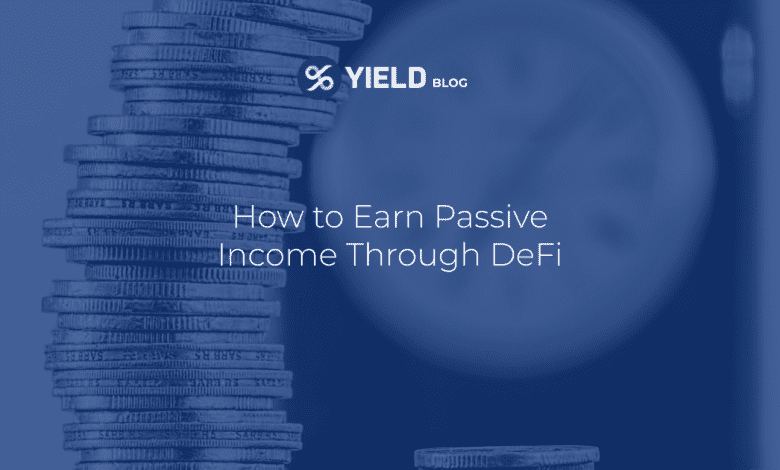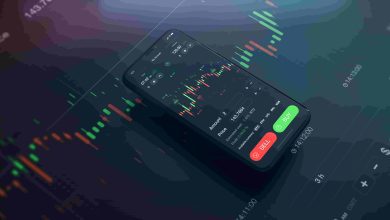How to make money on DeFi?

How to make money on DeFi?
Decentralized finance has opened up completely new opportunities for investors. The passive income potential of DeFi is currently unlimited. In this segment of the cryptocurrency market, new protocols and platforms are regularly launched, and various opportunities are available for exchanging digital assets and generating passive income. To make money on DeFi, you need to familiarize yourself with all the tools. It is also important to follow the updates of projects and products, because this segment of the crypto market is developing rapidly.
Types of DeFi projects
The easiest way to earn passive income through decentralized finance is to deposit your cryptocurrency in a protocol that will pay APY (annual percentage income) for it. This is almost identical to how an investor would deposit cash into a traditional bank account.
Deposits on any DeFi platform are only accepted in cryptocurrencies. Fiat money for decentralized finance does not exist. The first step for a beginner DeFi investor is to weth price and tokens. The vast majority of decentralized finance projects run on the Ethereum blockchain, bitcoins (BTC) are usually accepted in a modified state (for example, wBTC, or wrapped bitcoin ). Here are some decentralized finance tools that investors can capitalize on.
Landing
Lending is a popular DeFi direction. Users lend their digital assets to the platform, securing them in a smart contract. Further, borrowers can get a loan in these cryptocurrencies by paying interest to the platform. Smart contracts distribute income between creditors in proportion to how many coins (tokens) each of them fixes in the protocol. Users can withdraw their assets at any time. Landing protocols offer a higher annual percentage return on APY than traditional bank deposits. For example, Compound Finance offers up to about 6.5% per annum in digital assets.
For example, an AAA investor has 5 BTC. He exchanges them for 5 wBTC and then deposits them into the DeFi protocol to receive APY. He can then take out a secured loan of up to 75% of the value of his Bitcoin (about 3.75 BTC) for another coin or token offering a higher yield. The investor then takes out a loan and earns from it. In essence, the user added 75% of the value to their BTC in order to receive income. It also continues to benefit from the capital appreciation of the original asset ( HODL strategy ).
Staking
This tool includes the process of fixing digital assets in a smart contract. Many DeFi platforms also use staking as a means to open a savings account on the blockchain. As in traditional finance, the user’s balance will earn interest on the deposit, usually in the form of tokens of the same type or in a different unit on the same block chain.
But for many DeFi cryptocurrencies (mostly on Ethereum, which is not yet a Proof-of-Stake blockchain), staking is simply a way to encourage users to lock up their assets for the long term. The income from the network is divided among the contributors.
Most DEX decentralized exchanges with an automatic market making (AMM) model offer options to allocate capital in native tokens. Uniswap has UNI, Pancakeswap has CAKE, Plasma.Finance has PPAY, just to name a few. Such tokens usually earn a share of the income generated by all products and services of the platform (for example, fees from swaps in liquidity pools).
Yield Farming
Another popular tool to make money on DeFi is crop farming. Decentralized exchanges (DEXs) do not depend on the order books that are used on centralized trading floors. DeFi marketplaces generate liquidity pools consisting of token pairs with equally distributed value. For example, a user can deposit $3,000 worth of assets by offering $1,500 worth of ETH and $1,500 worth of USDT. Each investor can provide their cryptocurrencies to the community.
Many DeFi platforms also have farms where you can lock up your digital coins and earn even more profit. It is very similar to staking, except that farming is only available for cryptocurrency pairs (LP tokens). Only liquidity providers can grow crops.
Investments
Fundraising is an important part of early project development. In the real world, fundraising is done through public offerings. Investments go to pay for the work of employees who develop the business and increase the value of the company.
This fundraising method has also extended to xwp price, but instead of shares, tokens are used. Each project offers investors a fixed number of digital units at a price lower than the rate expected when the asset is launched on the exchange. This is an opportunity for investors to make a lot of X’s (to increase their invested capital several times over).
In the DeFi sector, project funding occurs through IDOs. This is a fundraising method in which the project’s cryptocurrency is issued through a decentralized platform called a launchpad. The initial offering on the DEX provides an open fundraising mechanism, guaranteed liquidity, and a quick sale of tokens at a price different from the starting price of digital units. The new cryptocurrency is already listed on the exchange, and it is unlikely that its rate could fall sharply. In addition, investors’ assets are not unlocked immediately, but according to a schedule, so the project has an incentive to maximize its capitalization.
Liquidity supply
DEXs such as Uniswap, Yearn, and SushiSwap are popular for their automated market maker (AMM) protocols. These platforms do not need the “order book” system used by traditional centralized exchanges. Instead, DEXs create liquidity pools made up of token pairs of equal value. They form the basis for trading on decentralized exchanges.
These liquidity pools are public. Anyone can lend their assets by locking the same values of certain pairs of tokens. Liquidity providers earn a portion of the swap fee (eg Uniswap charges 0.3%) proportional to their share. The more exchanges that occur in the pool, the more LPs earn.
APY can be even higher than in the landing page, but liquidity providers accept the risk of intermittent loss (IL) for this. This is due to the fact that the combined tokens can fluctuate significantly in price. moreover, Liquidity providers are able to mitigate the risk of intermittent loss by choosing pools that are highly liquid, or those that are made up of stablecoins and other less volatile assets.
Margin trading
Another tool in the DeFi space. Cryptocurrency margin trading occurs when a trader borrows assets to increase their position for a trade. This tool involves the use of leverage of different sizes, usually referred to as 5x, 10x, 25x. High margins allow you to earn significant profits, but also entail risks. With an unfavorable outcome, the investor may suffer more losses than when trading without leverage.
Crypto derivatives (financial derivatives) exchanges have traditionally relied on the centralization of organizations that lend money to trading on margin and perpetual contracts. However, thanks to the blockchain, distributed liquidity pools and the possibility of lending through DeFi protocols (Uniswap, Compound, Sushi and others) have appeared.
The dYdX platform is the first crypto derivatives exchange of its kind to use only crowdsourced liquidity. In practice, this means that when a user deposits a margin to open a leveraged trading position, they are borrowing assets from a decentralized liquidity pool fully funded by other traders. There are not many projects in this niche. Among the popular sites are Kashi (from Sushiswap), dYdX, Perpetual Protocol.
Arbitrage trading
The fragmentation and inefficiency of DeFi markets means that the prices of the same financial instruments vary by venue and adapt differently to the same market movements. When traders spot such market imperfections, they use them to capitalize on DeFi tokens and their price differentials.
For example, wBTC is trading at $50,000 on exchange A and $50,200 on exchange B. Traders can purchase a digital asset on platform A and move it to a service to sell B at a profit (in this case, this will result in $200 in revenue per wBTC) .
In other words, arbitrage trading is a series of transactions when cryptocurrencies are simultaneously bought on one platform at a low price and sold on another platform at a higher price. There are 3 DeFi arbitrage strategies:
- Simple arbitrage. One of the most basic strategies. Its essence is described in the example above. When traders see an opportunity, they buy an asset on one exchange at a low price and transfer it to another platform to sell it at a higher price. There is no need to make any other trades here, except for those mentioned earlier, so the crypto arbitrage strategy can be executed quickly.
- triangular arbitrage. It is carried out either on several exchanges or on one platform. Aimed at making a profit by exploiting price discrepancies between 3 cryptocurrencies.
For example, an arbitrage opportunity arises when wBTC/USDC is trading at $50,000 and ETH is trading at $2,000, but wBTC/ETH is inefficiently valued at 30 ETH instead of 25 ETH.
A triangular arbitrage strategy
In such a scenario, a trader executes a triangular arbitrage strategy with the following steps:
- Deposits funds to the exchange and buys 1 wBTC for $50,000.
- Trades the wBTC/ETH pair to convert bitcoin to 30 ethereum.
- Sells 30 ETH for $60,000.
This discrepancy generated a profit of $10,000. This opportunity is very rare and must be exploited quickly before the exchange’s algorithm corrects the error.
- Profitable arbitrage. Allows traders to profit from interest rate inefficiencies between 2 DeFi lending or staking platforms. With Yield Arbitrage, a user borrows funds in a stablecoin with a lower APR, exchanges it for another stablecoin with a higher APY, and uses the latter cryptocurrency to lend to other investors.
An example of a yield arbitrage strategy is as follows:
- On the DeFi lending platform APY, DAI borrowing is 5% and USDC has a 10% annual percentage yield (both stablecoins are pegged to the US dollar).
- A trader deposits USDC on the platform and uses it as collateral to borrow DAI.
- After that, he exchanges his DAI back to USDC.
- He then lends USDC to others to profit from the 5% spread between the APY of the two coins.
This crypto arbitrage strategy can work great with one or more DeFi lending protocols. But it is important to consider gas fees (especially on the Ethereum network).
Overview of large DeFi projects
Decentralized finance is an opportunity for users with small deposits to invest in the digital market, which cannot be said about many traditional financial instruments. For example, in DeFi, you can buy gold or shares on the blockchain without having to have physical assets in storage or a brokerage account.
Decentralized finance has caught the attention of many traders. Traditional markets lack higher returns and volatility. Altcoin trading is one of the riskiest investment opportunities. However, with proper risk management, trading cryptocurrencies can be a more lucrative form of income generation. Various investment tools are available to users to help make money on DeFi.
Compound
It is a decentralized lending platform established in September 2018. The platform is built on the Ethereum blockchain. Initially, Compound was a platform run by a single company. After the release of the COMP token, a decentralized autonomous organization (DAO) began to serve the protocol. The main idea of the project: is to use the free cryptocurrency of investors. The Compound protocol allows lending and borrowing of 16 Ethereum-based assets, including Basic Attention Token (BAT), 0x (ZRX), and Wrapped BTC (wBTC) tokens.






